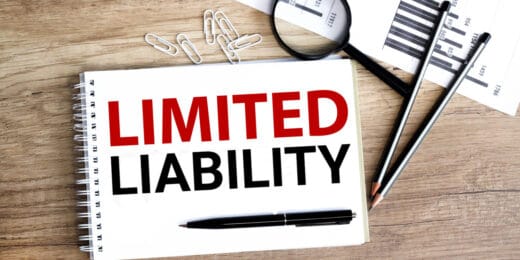During the lifespan of your company, there will probably come a time when you will need to call on some financial assistance; be it in the form of a loan to acquire a property, purchase new equipment, or buy a company car.
When a UK company creates a charge against its assets, it is legally required to register that charge with Companies House within a specific timeframe.
In this post, we explain how to register a charge at Companies House. Let’s get started.
Key takeaways
- Register company charges within 21 days to avoid potential penalties and ensure creditor protection.
- Utilise the Companies House WebFiling service for efficient and cost-effective charge registration.
- Consider consulting a professional for guidance on managing complex company charge registrations.
What is a charge?
A charge is a security a company provides to a lender in return for a loan. It’s essentially a guarantee for the lender that they can recover their money if the company fails to pay.
There are two types of charges: fixed charges and floating charges.
A fixed charge is attached to specific assets, such as a property or vehicle. This means the assets cannot be sold or transferred without the lender’s consent.
A floating charge, on the other hand, covers assets that may change or fluctuate over time, such as stock or unpaid debts.
The purpose of registering charges is to ensure transparency, and provide notice to potential investors or lenders.
Who is responsible for registering a charge with Companies House?
While it is the duty of the overall company itself to ensure each charge is registered with Companies House on time, there is no specific individual or entity required to register the charge.
Companies House state that any person ‘interested in the charge’ can make the registration. Typically, this will be the company director(s) (the borrower), the lender, or authorised representatives working on behalf of the lender, such as an agency or accountant.
Do all charges need to be registered?
Almost all charges will need to be registered with Companies House. However, there are a few exemptions, which are:
- a charge in favour of a landlord on a cash deposit given as security on the lease of land
- a charge created by a member of Lloyd’s (within the meaning of the Lloyd’s Act 1982) to secure its obligations in connection with its underwriting business at Lloyd’s
- a charge excluded from the application of section 859A of the Companies Act 2006 by or under any other Act
While it is no longer considered a criminal offence not to register a charge, there can be serious consequences if a company fails to do so. For example, the charge may become void or there could be a significant fine. Therefore, if you’re in doubt, it is probably worth registering the charge, as there are no disadvantages in doing so.
When is the deadline for registering a charge?
Applications for registering a charge must be made within 21 days.
The 21-day period starts from the date the charge has been created, which is typically the date when the charge document or instrument is signed. It’s also important to note that this registration period is inclusive of weekends and public holidays.
To ensure timely registration, it is advisable to prepare and submit your application promptly after the charge is created, to avoid any unnecessary delays and penalties.
How to register a charge with Companies House
The quickest and simplest way to register a charge is online via the Companies House WebFiling service.
Registering online is the most efficient route, as the service features inbuilt checks to ensure your charges are filed accurately, while also offering a reduced fee of £15.
However, you can also register a charge using the MRO1 Particulars of a charge paper form for a slightly higher fee of £24. If you are a Limited Liability Partnership, you will need to use the LL MRO1 form instead.
The process is the same whether you are the company (borrower), lender, or a representative of the lender.
To register your charge online, you will need:
- A WebFiling account – you can register for one here
- Your company authentication code
- Your company details, including your company number and business name in full
- The date the charge was created
- The full names of the person(s) entitled to the charge, i.e. the lender(s)
- A brief description of the charge
- Details about the charge type, i.e. fixed or floating
- A certified copy of the charge detailed, as a PDF
If you are the lender or a representative of the lender, you will additionally need a lender authentication code, which you can retrieve by completing the Application to Register as a Lender for Filing Electronic Charge Documents form.
Once your form has been submitted, you can expect to receive a Certificate of the Registration of a Charge, usually around five days later. This will feature your unique charge code assigned by Companies House, as well as the key details relating to the charge.
Registering a late charge
As mentioned earlier, you have 21 days to register a charge once it is created. Failure to do so means it could prove difficult for a creditor to recover the debt if the company were to become insolvent.
If you miss the deadline, you will need a court order to extend the timeframe to register the charge.
Who can view a company’s charges?
A company’s charges are publicly available for anyone to view, including the general public, creditors, investors, legal professionals, and anyone else who may access the Companies House register.
You can find details of a company’s charges simply by entering a company name into the Companies House ‘Search the register tool’. Details of any charges will appear on the ‘Filing history’ tab when you select the ‘Charges’ tick box.
If you do not wish to have certain sensitive details exposed to the public, you may choose to remove or ‘redact’ this information from the certified copy of the charge, before submitting it.
For example, you can remove details such as:
- personal information relating to an individual, other than the name of the individual
- the number or identifier of a bank or securities account
- a signature
Wrapping up
We hope you’ve found this article useful and that it’s helped clarify what a charge is and how to register one.
Dealing with company charges can be complex, so it may be a good idea to consult with a chartered accountant or commercial solicitor for expert help and advice before entering into a financial agreement.
If you have any questions, please don’t hesitate to leave a comment below and we’ll be in touch as soon as possible.
Please note that the information provided in this article is for general informational purposes only and does not constitute legal, tax, or professional advice. While our aim is that the content is accurate and up to date, it should not be relied upon as a substitute for tailored advice from qualified professionals. We strongly recommend that you seek independent legal and tax advice specific to your circumstances before acting on any information contained in this article. We accept no responsibility or liability for any loss or damage that may result from your reliance on the information provided in this article. Use of the information contained in this article is entirely at your own risk.














Join The Discussion
Comments (4)
Can a trading company register charge on its customers. In order to secure the value of goods sold on credit.
Thank you Kahmed. Yes, this would be possible as long as the customer agree. We would recommend contacting a solicitor for further assistance.
Kind regards,
The Rapid Formations Team
Using Form MR08 (no instrument) what is meant by sections Nature of the Charge and Obligations of the Charge? Thanks
Hi Trevor,
Thanks for your message.
The “Nature of the Charge” section is, amongst other things, looking for clarification whether the charge is fixed or floating, etc. and its ranking in priority (for example, first charge).
The “Obligations Secured by the Charge” section is looking for information about the amount that you have borrowed (and thus secured under this charge) and any other obligations the company has picked up.
Kind regards,
The Rpaid Formations Team